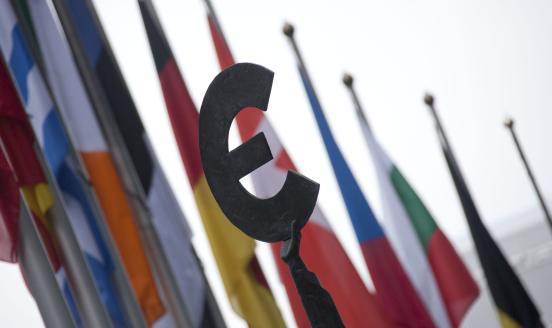Debate on Target 2: Don’t confuse symptom and disease!
For some time economists have been engaged in an arcane controversy about the significance of the imbalances in the joint settlement system used by eurozone central banks, called Target 2.
In a series of contributions, Hans-Werner Sinn of the CESifo research group in Munich has drawn attention to the fact that central banks in the northern part of the eurozone were accumulating claims on central banks in the southern part via Target 2. From about zero in 2007, these claims have risen to €400bn in 2010 and €800bn lately. Mr Sinn argues that this amounts to backdoor financing of southern Europe and asks for these claims to be settled periodically.
A letter (not yet made public) by the Bundesbank president Jens Weidmann to Mario Draghi, president of the European Central Bank, is set to change the nature of the Target 2 debate and make it a policy issue of major importance. The Frankfurter Allgemeine reports that the Bundesbank would like its Target 2 balances to be collateralised.
Is this imbalance a problem? It is certainly a worrying symptom. But the starting point of any analysis should be the recognition that Target 2 imbalances are not the direct result of current account imbalances. Among eurozone countries, the latter reached their climax in 2007, but they were entirely matched by private capital flows. The Target 2 deficit of the southern eurozone countries has helped finance shrinking current-account deficits but also, and in some cases much more, private capital outflows..
Indeed the eurozone has in recent years experienced “sudden stops” of the sort common in emerging market balance of payment crises. Instead of flowing in, partly through the interbank market, private capital has suddenly started to flow out of southern European countries, including Italy at the end of 2011. Banks unable to access liquidity have turned to the Eurosystem, which has substituted the interbank market, thereby performing its classical role as a lender of last resort. Data on recent access to central bank liquidity confirm that although banks in the whole of the eurozone made use of it, it went disproportionately to southern Europe.
The very notion of a balance of payment crisis within the eurozone was alien to the concept of a monetary union. It was routinely assumed that for countries within it, balance of payments would become as irrelevant as they are between regions within a country. This assumption was wrong. Countries are not regions, largely because much their banking systems are primarily exposed to their sovereign and to domestic borrowers. So when the sovereign is in distress or private borrowers partially insolvent, the banking system is contaminated and there is a stigma attached to being a bank from country X or Y. Foreign lenders become wary and stay put. Target 2 balances largely reflect this counterparty risk.
But a symptom is not a disease. It is the diseases that must be cured. This certainly requires more than letting the fever subside through a huge injection of central bank liquidity. Public finances must be made convincingly sustainable, bad loans on banks’ balance sheets must be provisioned and recapitalisation must take place wherever needed. Furthermore, a lesson from the euro crisis is that excessive credit booms leading to large current account imbalances must be avoided. In the very short term remaining large external deficits such as that of Greece, where it reaches 10 per cent of gross domestic product, must be shrunk. Wherever useful, the European Union should make use of the procedure it recently created to this end.
Only when the diseases are cured will private capital flows return. In the meantime, the Eurosystem is doing its job. It is to be commended for it, and actions that would cast doubt on the future of the euro should be avoided.
A version of this column was also published in the Financial Times The A-List



